Why you can not throw a condom in the toilet: how to dispose
On the packaging of condoms of all known brands there is an inscription prohibiting the disposal of these hygiene items, throwing them into the city-wide sewer network. Few notice this warning, and those who still discovered it are wondering: why not throw a condom into the toilet? You can find the answer to this question by continuing to read the material.
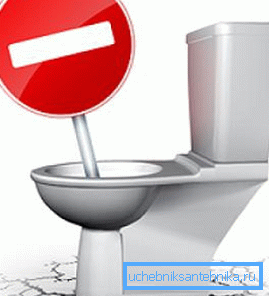
Condom tips
Recycling Methods
Many boys and girls, both young and not so much, who only recently or already have been using condoms for a long time, do not know what to do with this contraceptive after it has already played its intended role.
Some of them, not knowing why the condom should not be flushed down the toilet, are fed to the white porcelain device standing in the toilet. And after that, they have a lot of trouble both with other inhabitants of the home (if the condom pops back), and with the plumbers of the housing office (if this latex contraception is stuck somewhere in the sewer riser of the house).

To resolve all your doubts once and for all, below is a detailed instruction describing how to proceed after applying this method of contraception:
- Having finished sexual intercourse, you do not need to immediately ask your partner what to do next and why you cannot flush the preziki into the toilet. First of all, you should properly remove it from the penis, otherwise it will slip from the body and get stuck in the vagina, and this is fraught with many far-reaching consequences.
- Having coped with the first item, you do not need to throw the used contraception under the bed or throw it out in the window. In the first case, the kitten that lives in the house will be displeased with you, in the second case, mothers walking under the windows and wipers, who are also very interested in why it is impossible to throw the condom into the toilet, and go outside.
- In order not to spoil the romantic evening with the wipers and plumbers, you just need to tie a knot at the end of the outdated contraceptive, wrap it in a napkin and put it in the trash.
Tip! At the end of the disposal procedure for the condom, it is advisable to wash your hands and dick, regardless of whether you continue to have sex or not.

What not to do
Now about the main issue in the title of the article. If you pay attention to the foil packaging from the condom, you can see the warning, printed, as a rule, in black letters and supplied with an exclamation mark. It prohibits the disposal of the condom in the citywide sewer network. That is why many people have a question, why not to throw condoms into the toilet?
To explain such a requirement can be quite simple:
- latex or polyurethane, from which condoms are made, is not soluble in water;
- a condom that has fallen into a sewer pipe may be stuck in the knee or outlet, which abounds in waste water disposal systems;
- By forming a small blockage, a rubber contraceptive can be a source of serious congestion, causing a general obstruction of the system.
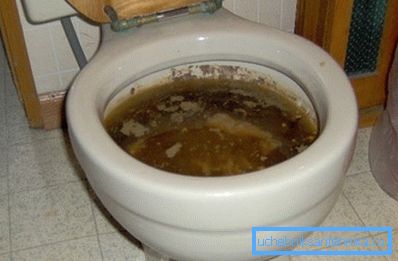
Note! There is one more thing that explains why condoms should not be thrown into the toilet. The fact is that, unlike many other organic and inorganic substances that form blockages in the sewage system, rubber is practically insoluble by chemical means used to eliminate traffic jams. In this case, you will have to use a plumbing cable with a special hook, which is very time consuming.
Remember, the price for plumbing services, which will have to be invited to eliminate the congestion caused by a condom, will be quite high. So do not be lazy to throw this contraceptive in the trash. In addition, you will find complete peace of mind, because the question of why condoms can not be thrown into the toilet, will no longer worry you so much.
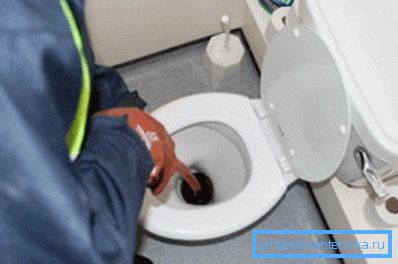
Items that also can not be sent to the sewer
Having dealt with latex contraceptives, to complete the picture should be noted a few more items and materials that do not need to be flushed into the toilet. Otherwise, you still won’t understand what caused the sewage system’s blockage: a discarded condom or a cat litter box.
So let's get started:
- Construction garbage. Nothing of the kind to be placed in the toilet (the more so just installed) cannot be. And we are talking not only about large-sized objects - pieces of bricks or concrete - but also about loose substances. The first, for obvious reasons, will be stuck in the nearest knee, and it will be very difficult to pull them out. The second will settle on the pipes and will also cause a blockage, but not immediately, but a little later.

- Cat Tray Granules. It all depends on the variety: gel, mineral, crumpled, woody and so on. The first three are made of special substances that do not decompose in water. Therefore, they, like condoms, flush into the toilet is strictly prohibited. The consequences will be similar. As for the wood filler, the pressed granules from the ash disintegrate well under the action of the liquid, so they can go down to the sewage system for further purification in special city septic tanks. However, it is better to refuse it, because sometimes ash can gather in lumps and get stuck in some narrow place, adding a headache to you.
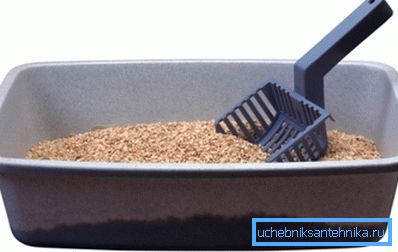
- Toilet paper. It all depends on whether your home is connected to a centralized system for the collection and disposal of waste, or you are the happy owner of a spacious country house with an individual septic tank. In the first case, everything is fine. After all, toilet paper is completely made of cellulose. Therefore, although it is resistant to mechanical stress and does not dissolve in water, once it has entered the collector, it decomposes into its constituent elements under the action of substances specially added to the treatment tanks.
As for individual septic tanks, everything is not so simple:
- firstly, when designing an individual sewage system, pipes of a much smaller diameter are used, therefore the chance of the formation of a mash from cellulose increases many times;
- secondly, toilet paper, falling into its own septic tank, does not decompose and is deposited on the walls and bottom of the tank, clogging the tank.
Note! Some assenizatorsky machines do not have pumps of sufficient power to suck out toilet paper accumulated at the bottom of the tank. Therefore, throwing it into the sewer in a private house is not recommended.
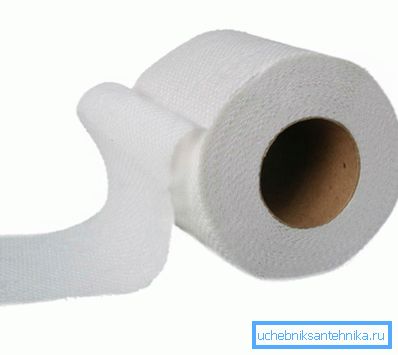
- Food waste. The situation with organic waste is generally similar to that described in the previous paragraph. For urban sewage, food particles are absolutely safe (unless, of course, you do not flush too large pieces into the toilet that are stuck in the nearest knee). It is strictly forbidden to flush food waste into an individual sewage system, especially if you have a biological treatment station with anaerobic bacteria.
Conclusion
Now you know exactly why you can not flush condoms in the toilet. It will be useful for you and the information and that still should not be sent on a journey through the pipes of the city sewer. However, if somehow the plumbing fixture in your dressing room is still clogged, you can easily clean it with your own hands when you watch the end of the video in this article.